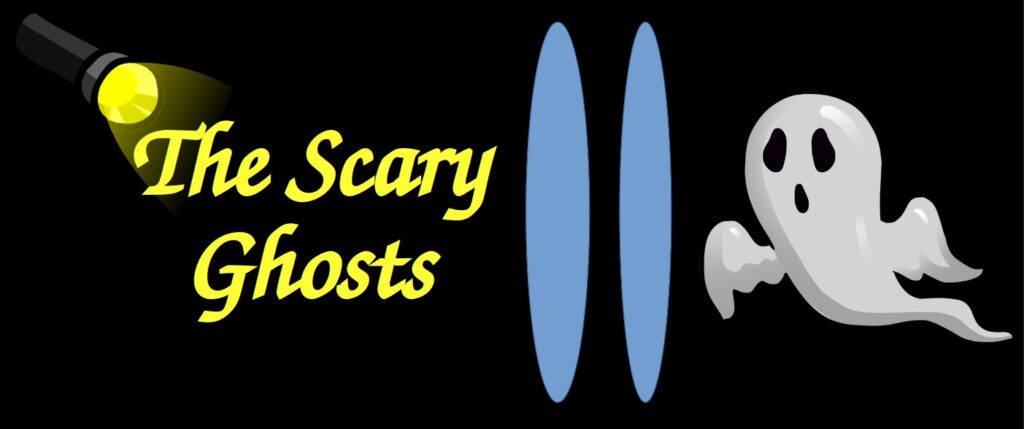In a previous post we established the existence of ghosts in imaging systems and we showed an example of ghosts of objects that reside inside the image. These ghosts are a nuisance but the identification of such ghosts’ origins is relatively easy since we can correlate the object and its ghost via the same image. In this post we will see other kinds of ghosts – the ones where the origin of the ghost image is in an object that resides completely out of our Field of View (FOV) and does not even look like the original object.
Let’s take a look at this wonderful photo taken from the Netflix film Love Is in the Air at around the 31st minute of the film (please don’t hold it against me, I watched this film with my daughter ![]() ).
).

As pretty as this photo may be, there are round and nearly octagonal light blobs that do not belong to the scene. They are artifacts of the optical system, beautiful ones, but still artifacts. If we were to look at this view with our own eyes we wouldn’t have seen these blobs. Furthermore, if we were to take this photo with the same camera but with another f# these blobs would have looked different.
Where do they come from? And what are these weird light blob shapes?
Simulating Off-FOV Ghosts
As in a previous post, for simplicity, we will take a lens system with 3 elements: a negative lens f=-23.7mm, a positive lens f=26.2mm and another positive lens f=28.9mm. The distances between the lenses adjust the focus. The aperture is hexagonal in orange color, just before the third lens – the aperture shape was chosen deliberately to be this shape. Here again, as in the previous post regarding ghosts, all aberrations are set aside for this discussion since the aberrations will not change the essence of things. See below the sketches of the optical system set to focus on an object in distance of 35mm.

In the Zemax simulation the lenses were equipped with realistic anti-reflective coating of 98% and 6 light sources were inserted inside the FOV of the optical system, for reference. The following image is the simulation of the system as is:
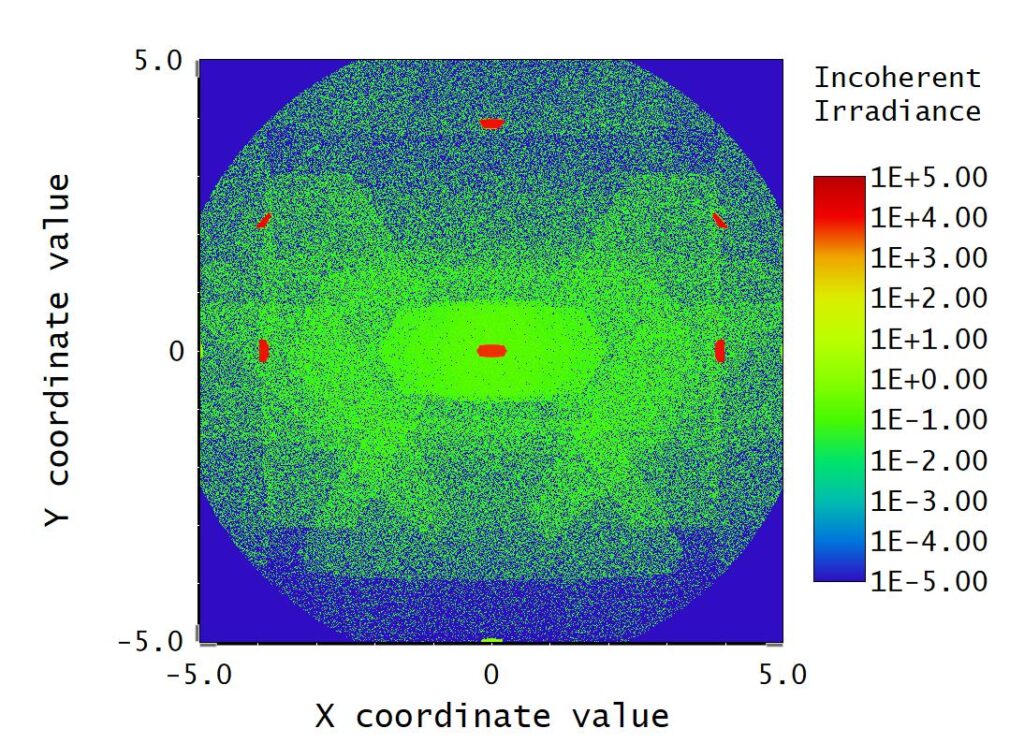
Note that the intensity scale is logarithmic in the simulation images. We can see that there are a few ghosts in the image but they are 6 orders of magnitude below the light.
In the next step we have added an oval shaped light source completely out of the optical system FOV with a wide enough angle so that its rays may reach the front lens but they cannot directly reach the image sensor as they are too wide for the system.
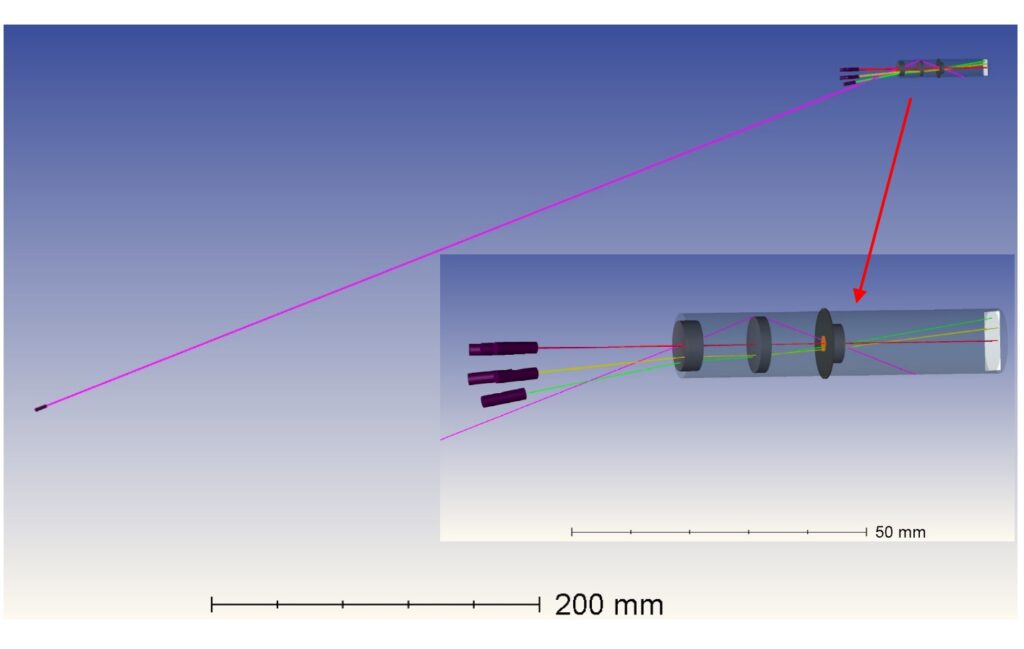
This light source’s simulated power is 3 orders of magnitude stronger than the reference 6 light sources so as to simulate a bright light source like the sun or a bright projector.
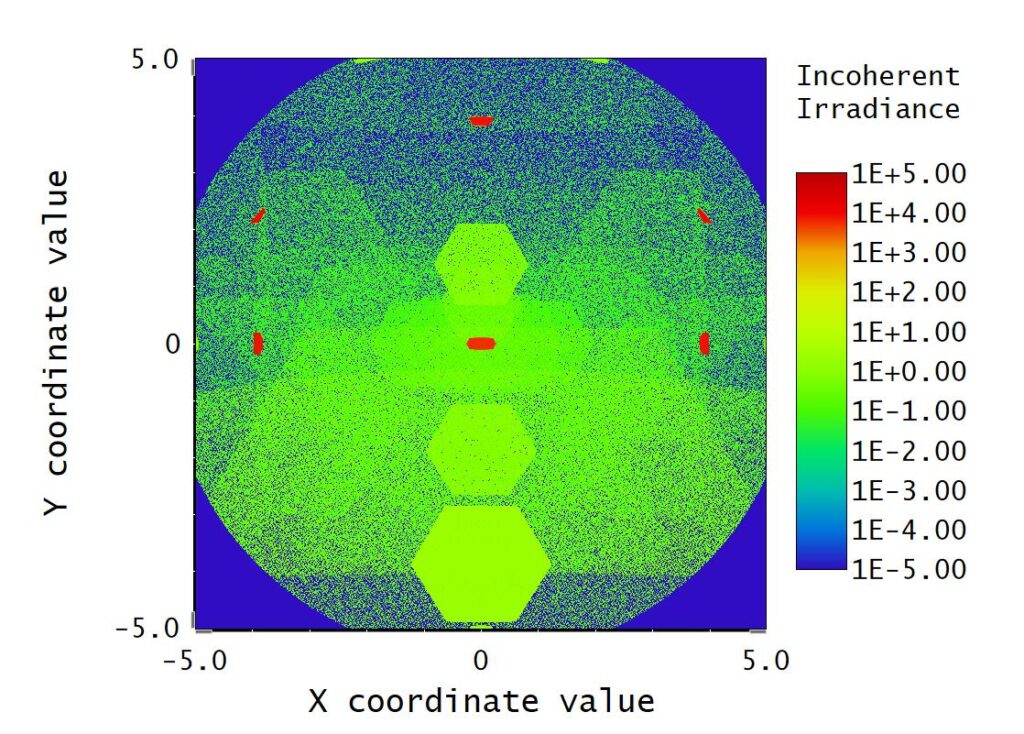
Now we see that on top of the ghosts that originated in our in-FOV light sources, that we had already identified earlier, suddenly a new pattern appears: hexagons. To remind you, we have deliberately chosen the aperture stop to be hexagonal so this is the only place this light could have come from. In practice, what we have here is that reflected light from the internal surfaces of our optical system creating a faint parasite image of the aperture. As usual, it is a ghost and that is why we need a logarithmic scale to identify it in the simulation. However, as we clearly see in the Netflix artistic photo, even 5 or more orders of magnitude can be a problem if a very strong light source like the sun is involved.
Off-FOV Ghosts in the Real World
Other than the scenery photo, it would be nice to see this phenomenon in the laboratory for higher confidence.
So here are two photos taken with the same setup as in my previous post: OPT-C1618-5M lens and IDS U3-3040LE-M-GL camera, where a wide enough light source was places 180mm from the lens edge but just out of the lens’ FOV. The image on the left was taken with ambient light and with a screw in focus. The image on the right was taken without ambient light and also without the screw and this so as to convince ourselves that the reflections are from the optical system itself and not from the object.
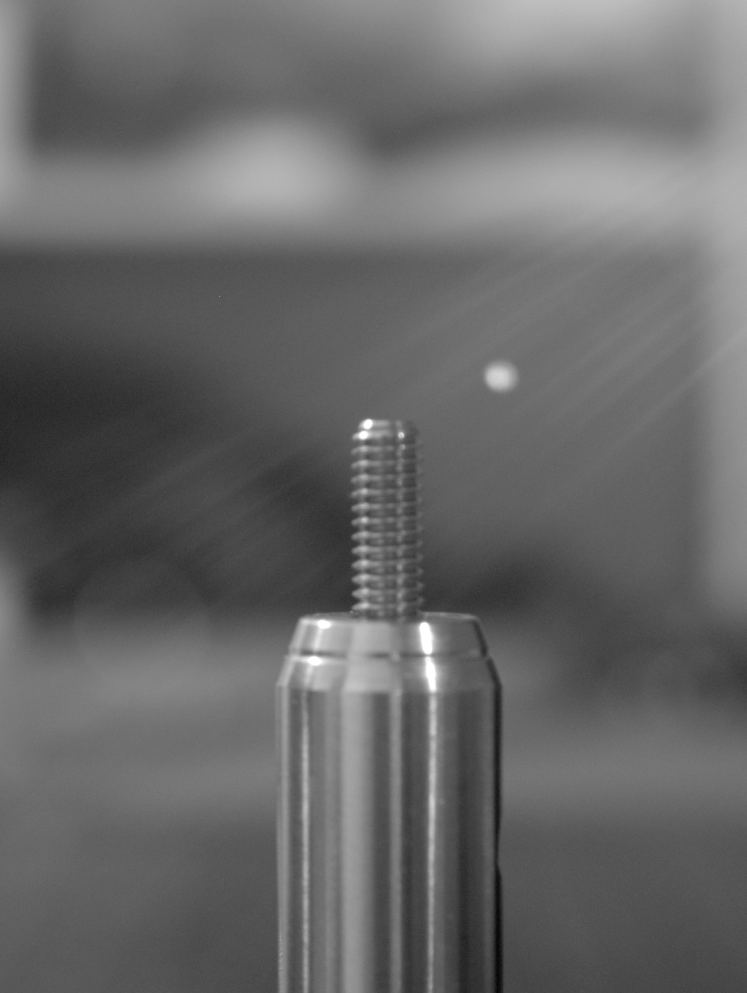
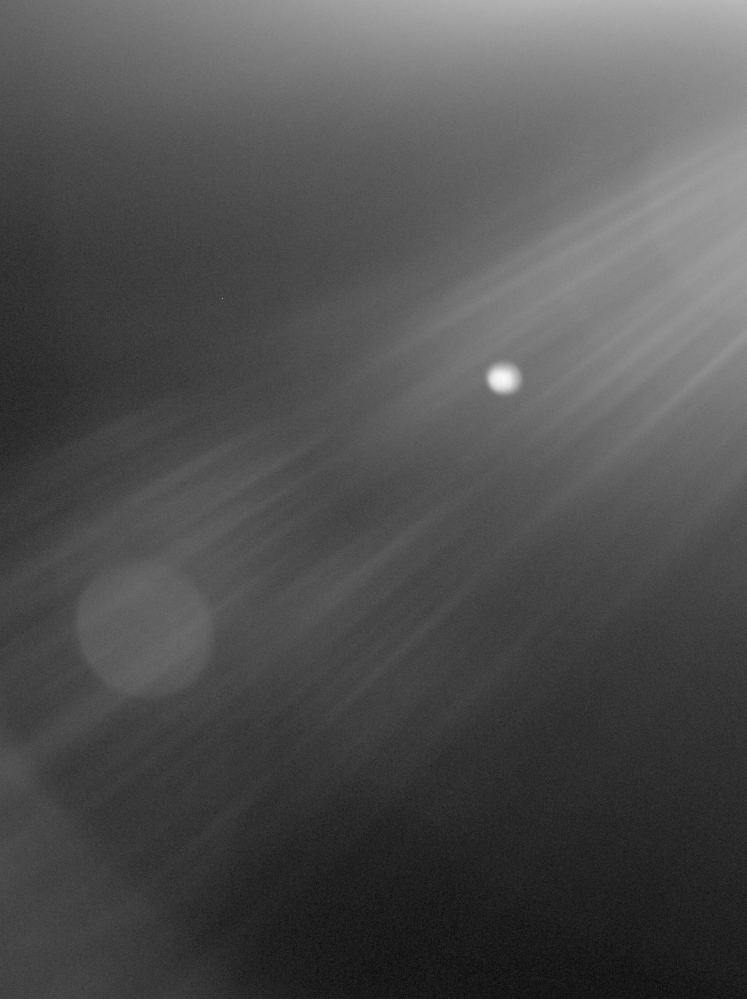
When we look at the image on the right we see two reflections of our light source – one strong in a circle-like shape on the right and another on the left, bigger in diameter and fainter. In the faint reflection we may even notice that it is not a perfect circle and slightly resemble a polygon. Note that the reflections are such that we can also see the light beam and rays in the image. For those of you who are not convinced that this is our aperture, take a look at the following two images taken with the exact same system but with a smaller aperture (higher f#) and of course the exposure time of the camera was adjusted to the lower light levels:
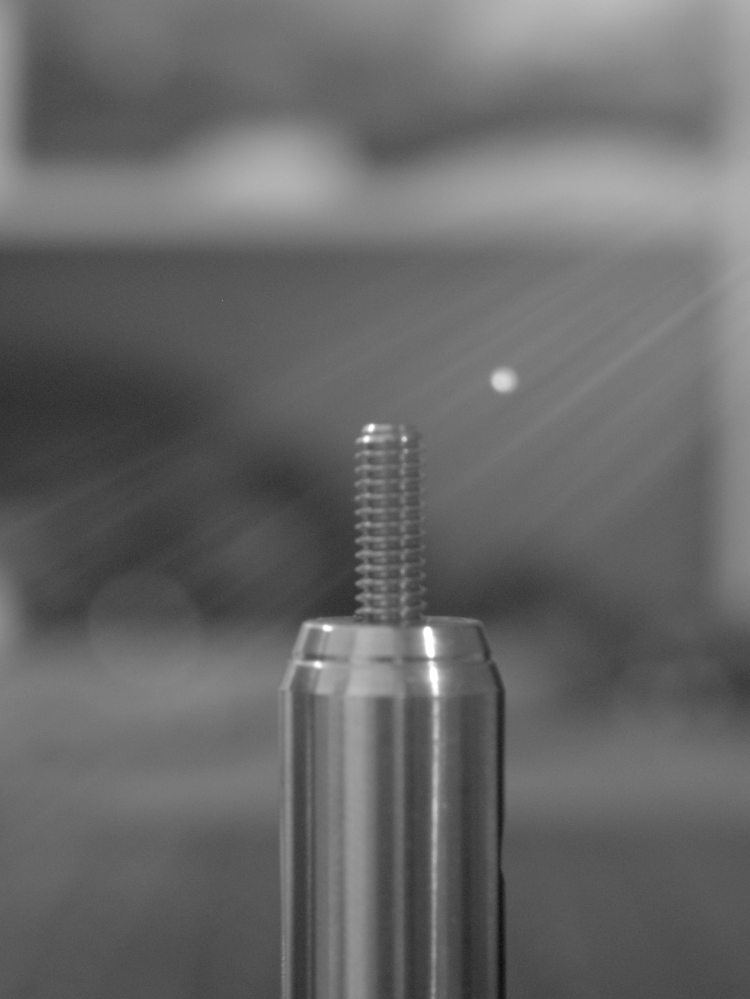
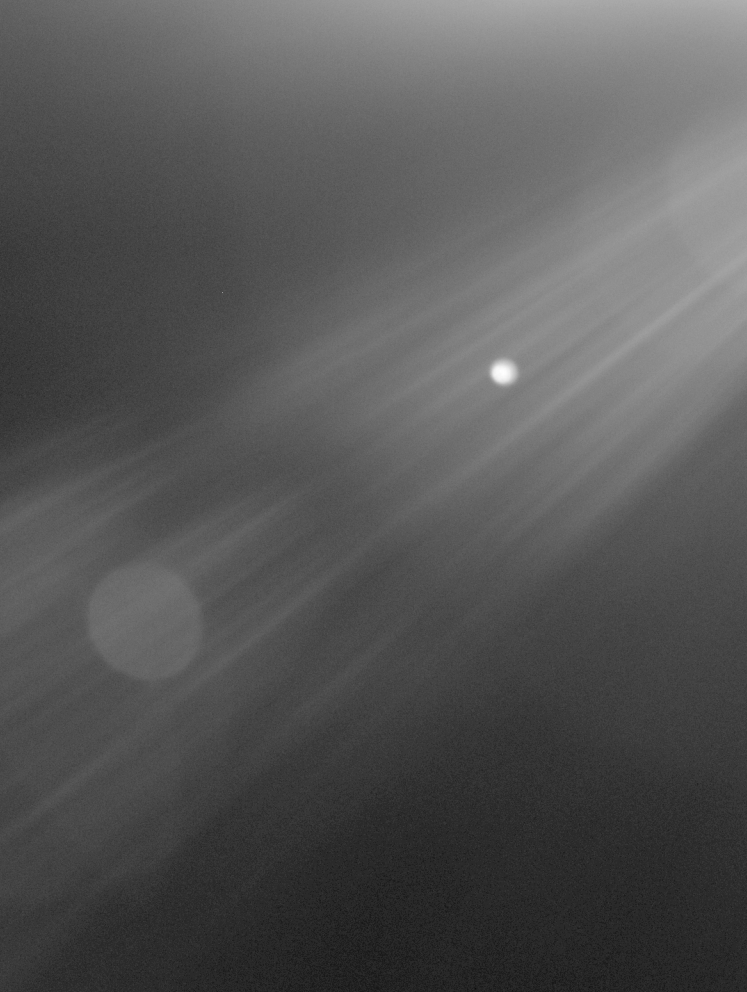
We can clearly see that the left reflection is smaller in diameter and that the edges are a bit sharper and more resemble a polygon. These are slightly off-focus images of the aperture. The reason these reflections are not in-focus images of the aperture is lab-space and light source limitations. It is not easy to imitate something beautiful like the sun in a lab ![]() .
.
So once again, our image is haunted but this time it is haunted by a source that does not look like anything in the image itself and therefore makes it a lot more difficult for the optical ghost-busters to eliminate. In some cases, such ghosts may rise from a light source that you did not even know exists for example, a yellow LED on an electronic board that found its way into the optical path via this or that reflection and into the sensor. This particular example becomes even more difficult to tackle if that certain LED is lit only during specific events in the system such that the ghost alternately appears and disappears.
A general word about stray-light analysis
In these last 2 posts I described and demonstrated 2 kinds of ghost image formations but any kind of stray-light that finds its way to the sensor in an optical system might be an obstacle and this includes imaging and non-imaging systems. Stray-light analysis is a complex process in optics in which the optical designer simulates all the components of the system (optical and non-optical) and tests all the light-matter interactions to see if there is light that is reflected\refracted towards any of the light sensitive components. In high power applications this is performed for each and every interaction to ensure that both user and machine safety are maintained.
There are ways to handle ghost images or stray-light, either by solving the optical path or by algorithms and image\signal processing (solve the algo in optics or solve the optics in algo), however no solution is really whole without correct identification of the source of the stray-light.
That’s all for this post. Ghosts and stray-light are very serious topics in optical system design. When performed correctly, a good optical design will eliminate the stray-light in such a way that, in typical operation conditions, there would be little impact of the unwanted light to the system’s performance. This being said, as we have seen in these last 2 posts, internal reflections cannot be eliminated completely so the design has to optimize these phenomena to the optical system requirements.

